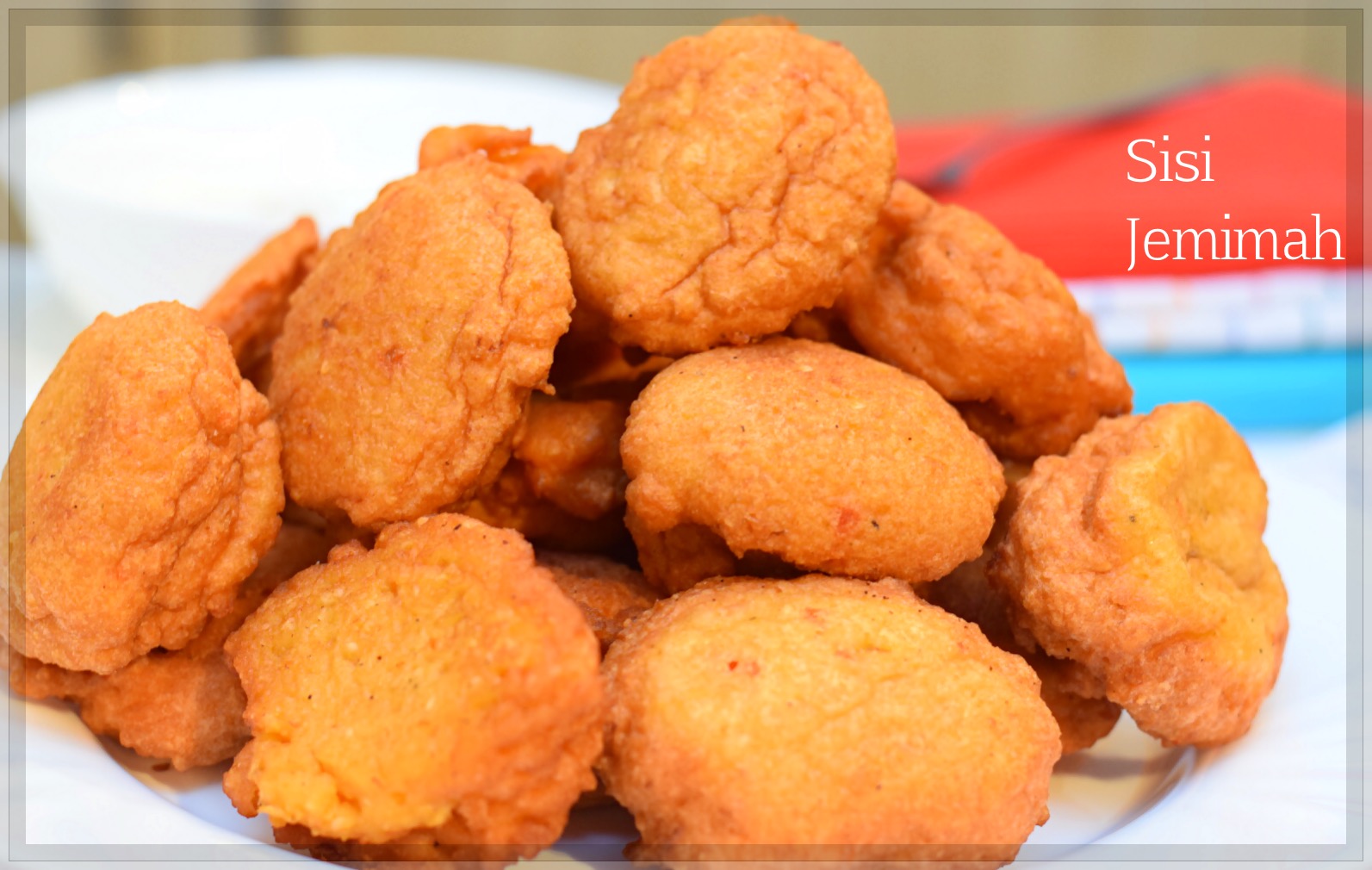By Prof. Raphael Nyarkotey Obu
It is believed that Àkàrà originates from the (Yoruba) langauge meaning “bread” or “pastry”, or the dish itself. The english name is Bean cake, Hausa: kosai, Portuguese: Acarajé is a type of fritter made from cowpeas or beans (black eye peas) from Nigeria. Also, (Márcio de Jagun, 2015; Jagun, Márcio de, 2017) states that the word drives from the Yoruba àkàrà n’jẹ, or “come and eat àkàrà”; the phrase was used to call out to customers by women selling acarajé on the street.
It is found throughout West African, Caribbean, and Brazilian cuisines. The dish is traditionally encountered in Brazil’s northeastern state of Bahia, especially in the city of Salvador. The dish was brought by enslaved peoples from West Africa, and can still be found in various forms in Nigeria, Ghana, Togo, Benin, Mali, Gambia, Burkina Faso and Sierra Leone(IPHAN, 2022).
Akara is an African cuisine that originated from the Yoruba culture, it is made from peeled beans (black eye peas), washed and ground with pepper, and other preferred seasonings, then beaten to aerate them, and deep fried in small balls.
Significance
It is believed that akara plays a significant role in the Yoruba culture, as it is specially prepared when a person who has come of age (70 and above) dies. It is usually prepared in large quantities and distributed across every household close to the deceased. Akara also used to be prepared in large as a sign of victory, when warriors came back victorious from war. The women, especially the wives of the Warriors were to fry Akara and distribute it to the villagers.
It is also known as “koose” in Ghana and is a popular breakfast dish, eaten with millet or corn pudding. In the case of Nigeria, Akara is commonly eaten with bread, akamu ogi (or eko), a type of cornmeal made with fine corn flour.
Akara: Nutritional Facts
Two studies(Deusdélia et al. 2008; Urano et al. 2012) found that akara contains proteins, vitamins and minerals such as calcium, iron and zinc, although its nutritional value is usually reduced by the presence of antinutritional factors such as phytates, fibers, lectins, polyphenols and tannins that affect minerals’ bioavailabile.
Akara, Science
Akara is made from (Black Eyed Peas Fritters).
Black-eyed peas are the beans used in gob3. There are other types of beans and they are nutritious.
Black-eyed peas, science
Weight loss
Black-eyed peas are loaded with protein and soluble fiber, this means eating akara or supports weight loss. Two studies (Bloom et al.2006; Lomenick et al.2009 ) found that the Protein in akara reduces levels of ghrelin, a hormone that’s responsible for stimulating feelings of hunger.
On the other hand, as a soluble fiber, Lattimer and Haub’s (2010) study found that this fiber is a type of fiber that forms a gel-like consistency and goes into your digestive tract slowly to make you full. This account for why most people like eating akara to keep them for the day. Eating beans, therefore, helps to manage your weight.
For instance, one large study in 1,475 people, by Papanikolaou and Fulgoni(2008) found that people who ate beans frequently had a 23% lower risk of increased belly fat and a 22% lower risk of obesity, compared with non-consumers.
Another, Kim et al.(2016) review of 21 studies found that consuming black-eyed peas, in your diet(gob3) could be an effective weight loss strategy and may help reduce body fat percentage.
Digestive Health
As a soluble fiber food, black-eyed peas support digestive health. Interestingly, one meta-analysis by Yang et al.(2012) demonstrates that when we eat more akara, the soluble fiber can help promote regularity and increase stool frequency in those with constipation.
Anderson et al.(2009) also found that the fiber in akara may avert digestive disorders, such as acid reflux, hemorrhoids, and stomach ulcers. Another good news is that one study by Carlson et al.(2019) found that the soluble fiber found in black-eyed peas and other plants can also act as a prebiotic, which helps the growth of the beneficial bacteria in our gut to help foster a healthy microbiome.
Kechagia et al.(2013) found that these beneficial bacteria go beyond our digestive health support but also reduce inflammation, enhance immune function, and reduce cholesterol levels.
Heart Health
Eating akara also reduces your risk of heart diseases. Bazzano et al.(2009) review of 10 studies, found that frequent eating of legumes was linked to lower levels of total and LDL (bad) cholesterol, these two could add to heart disease
Alizadeh et al.(2014) study on 42 women found that when we eat a low-calorie diet enriched with 1 cup of legumes per day for 6 weeks drastically decreased waist circumference and triglyceride and blood pressure levels, juxtaposed with a control group. Three studies(Esmaillzadeh and Azadbakht, 2012; Hosseinpour-Niazi et al. 2015; Golia et al. 2014) found that frequent consumption of legumes is linked to lower markers of inflammation, and therefore reduces your risk of heart disease. In conclusion, akara consumption presents with many health benefits.
NB:
Prof. Nyarkotey has strict sourcing guidelines and relies on peer-reviewed studies, academic research institutions, and medical associations to justify his write-ups. My articles are for educational purposes and do not serve as Medical advice for Treatment. I aim to educate the public about evidence-based scientific Naturopathic Therapies.
The writer is a Professor of Naturopathic Healthcare, a Medical Journalist, and a science writer. President, Nyarkotey University College of Holistic Medicine & Technology (NUCHMT)/African Naturopathic Foundation, Ashaiman, Ghana. Currently BL Candidate at the Gambia Law School, Banjul. E. mail: professor40naturopathy@gmail.com. + 2207452652(for more information)
References
- Significado do acarajé no candomblé” (in Portuguese). Brasília, Brazil: Instituto do Patrimônio Histórico e Artístico Nacional (Iphan). 2014. Archived from the original on 2019-01-01. Retrieved 2016-10-01.
- Jagun, Márcio de (2015). Orí: a cabeça como divindade, história, cultura, filosofia e religiosidade africana. Rio de Janeiro: Litteris. p. 221. ISBN 9788537402573.
- Jagun, Marcio de (2017). Yorùbá: vocabulário temático do candomblé (in Portuguese). Rio de Janeiro, RJ: Litteris Editora UERJ, Universidade do Estado do Rio de Janeiro. p. 64. ISBN 9788537403181
- Almeida, Deusdélia T.; Greiner, Ralf; Furtunado, Dalva M. N.; Trigueiro, Ivaldo N. S.; Araújo, Maria da Purificação N. (2008-01-24). “Content of some antinutritional factors in bean cultivars frequently consumed in Brazil: Antinutrients in beans”. International Journal of Food Science & Technology. 43 (2): 243–249. doi:10.1111/j.1365-2621.2006.01426.x.
- Carvalho, Ana Fontenele Urano; de Sousa, Nathanna Mateus; Farias, Davi Felipe; da Rocha-Bezerra, Lady Clarissa Brito; da Silva, Renata Maria Pereira; Viana, Martônio Ponte; Gouveia, Sandro Thomaz; Sampaio, Silvana Saker; de Sousa, Marcia Barbosa; de Lima, Glauber Pacelli Gomes; de Morais, Selene Maia (2012-05-01). “Nutritional ranking of 30 Brazilian genotypes of cowpeas including determination of antioxidant capacity and vitamins”. Journal of Food Composition and Analysis. 26 (1): 81–88. doi:10.1016/j.jfca.2012.01.005. ISSN 0889-1575.




